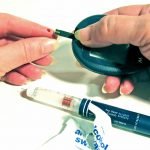
As more consumers look for greener choices in the marketplace, it’s not surprising that marketers are focusing on the environmental benefits of their products. However, green claims, as with any other advertising claim, must be backed up by sound science.
Green advertising claims – whether in the form of product marketing, packaging or promotion – are regulated by the Federal Trade Commission (FTC), which requires that businesses must have reliable evidence to back-up any environmental promises. You can get the details in the FTC’s recently-updated Green Guides (PDF), or check out this brief Summary of the Green Guides for an easy-to-read explanation.
Many of the laws have changed in recent years to reflect advancements in green product development and marketing. So, if your company is keen to market your green products, processes, or practices – here’s an overview of the basics of what you need to know about “green” marketing laws.
1. Avoid Broad Environmental Claims – As a general rule, the FTC advises against making broad, unqualified claims such as “green” and “eco-friendly,” which may be difficult to substantiate. However, if you can qualify these more general claims with specific environmental benefits, then you are OK — as long as those qualifications are clear, prominent and specific.
So, say you want to advertise a beauty product that has been packaged in recycled plastic. It’s not enough to stick a label on the product or run an ad that markets it as “eco-friendly” or “made from recycled materials” – you must state which attribute of the product is eco-friendly (and don’t hide it in the small print or footnotes).
2. Use of Certifications and Seals of Approval – Most consumers simply aren’t in a position to evaluate the evidence behind any green claims, so businesses often use green certifications and seals. If you have a green accreditation, this does not change any of your obligations to prove the truth behind your claims and clearly and prominently identify specific environmental benefits. This is extremely important if the certification or seal doesn’t clearly convey the basis for the accreditation.
Again, you should also steer clear of broad accreditations that suggest environmental claims that can’t be proven. If you have any material connections to the certifying organization – you’ll also need to disclose this. Read the “Certifications and Seals of Approval” section of the FTC’s Green Guide for more details.
3. Be Very Careful in Your Use of Green Terms and Phrases – As green technologies and practices advance, more terms are being used in the marketplace to describe green products, such as “made with renewable materials,” “biodegradable” or “made with recycled materials”. These may be misinterpreted by the consumer to mean something more than is actually being claimed. In the case of a “made with renewable materials” claim, you can minimize the risk of misinterpretation of the claim (and prosecution by the FTC for deceptive advertising) by clearly identifying the material you’re talking about and explain why it’s renewable. If only part of your product is made with renewable materials, qualify your claim so that you’re not implying that the whole thing is made with renewable materials.
The same holds true for claims like “made with renewable energy.” You can minimize the risk of deception by being specific, for example – “this product was manufactured using power derived from wind /or/ solar energy.” Now, if any element of your product is manufactured with energy from fossil fuels, you are prohibited from using the “made with renewable energy” claim without qualifying it. For example, you might indicate that, “75% of this product was made with energy derived from solar power.” The only exception to this rule is if you buy a renewable energy certificate (RECs to match the energy use). Read the “Made with Renewable Energy” section of the of the FTC’s Green Guide for more details.
The guide also covers use of terms such as “recycled content,” “refillable,” “made with renewable materials,” “non-toxic,” “free-of,” “ozone-friendly,” “recyclable,” “compostable,” and “degradable.” Many of the rules around these terms have recently been updated, for example, if you claim that your product is degradable, you must prove that it will degrade completely within one year. The same goes for “compostable” products – if a product can’t be composted at home within the same time as the materials that it’s composted with, you need to qualify your claim. “Recyclable” claims are also strictly regulated – if recycling facilities aren’t available to at least 60 percent of the consumers or communities where a product is sold, then you need to qualify your recycling claims by stating something like: “This product may not be recyclable in your area.”
More Information
Be sure to check out the Green Guides (or the summarized version here) for further guidance. If you are in any doubt, talk to a green business consultant or lawyer who specializes in consumer protection or marketing and advertising law.
Image: Green products
[“source-smallbiztrends”]











